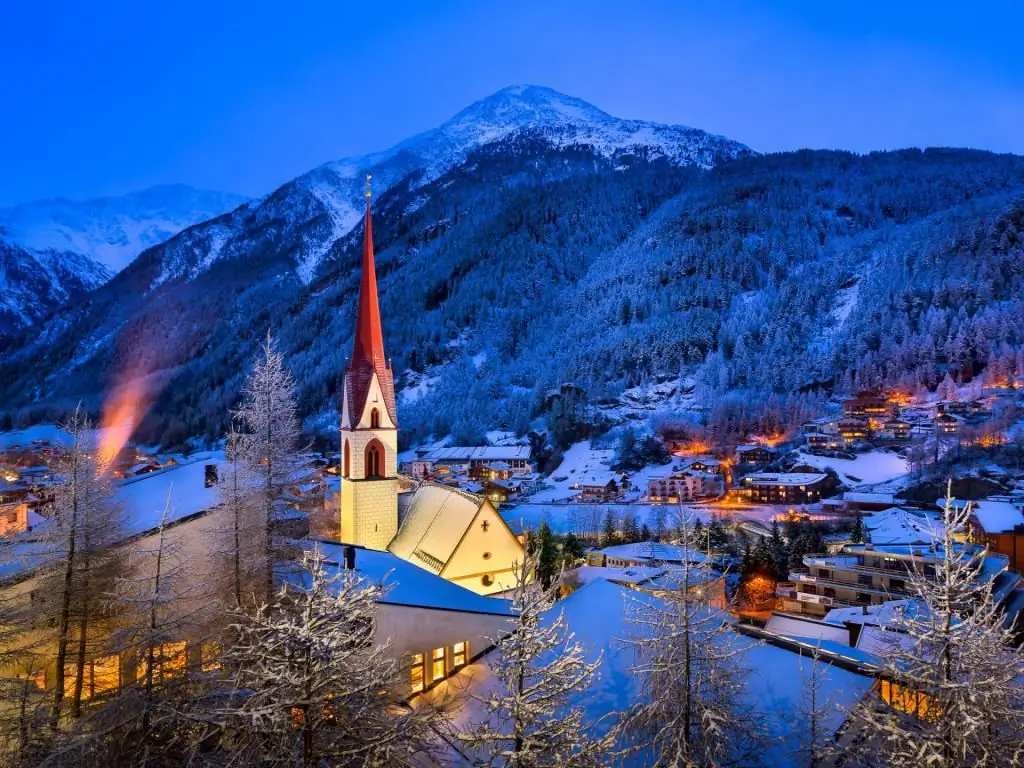- Author Harold Hamphrey [email protected].
- Public 2023-12-17 10:06.
- Last modified 2025-01-24 11:10.
Located 450 kilometers from Alice Springs in Central Australia, Kata Tiyuta National Park has many attractions on its territory. Ayers Rock (new Uluru), which stands out in the middle of the Australian desert, is the most famous of them.
What is special about Mount Uluru in Australia? You can learn about this and some facts related to it by reading the information presented in the article.

General information about the nature of Central Australia
These are endless deserts with thorny bushes and low trees, with s alt water lakes scattered everywhere. As you move through these expanses, canyons and mountains with strange shapes can suddenly appear.
In its very depths there is an amazingly beautiful and mysterious area - the Red Center. It is full of unique natural wonders. Numerous tourists from all over the world come to this place every year, although the weather here is unusually hot.
Australian mountain peaks are not famous andare not popular with climbers, however, they are unusual. Any native Australian will call Uluru (Red Mountain) as a symbol of Central Australia.

A bit of history
Mount Uluru is a huge formation in the form of a rock that arose approximately 680 million years ago at the bottom of Amadius, an ancient lake. This miracle of nature, destroyed by sharp temperature changes and winds, rises in the very center of the desert, breaking the monotony of the landscape. European scientists found and described it in 1873, giving the name Ayers Rock. This amazing red mountain was home to many tribes. The natives who inhabited these lands 10,000 years ago lived in caves at the foot of the mountain. They revered this rock as the cradle of life. A spring of water gushing out of the rock gave them the bare necessities for survival. And today, the inhabitants of this area regularly hold their sacred rites at its foot.
Officially, this rock belongs to the Anangu tribe, who leased this park to the government (term - 99 years). Every year, the authorities pay the natives 75,000 dollars with a surcharge of 20% for each ticket sold. Indigenous people are happy to support the development of tourism.

Description of Mount Uluru: photo
It is similar in shape to a lying elephant. From a distance, the mountain looks absolutely smooth, but as you approach it, all the cracks, bumps, roughness and furrows become visible. It consists of a unique block of red sandstone that can change its color depending on the lighting.
Uluru is the largest solid rock in the world. Its length is 3,600 meters, its width is approximately 3,000 meters, and its height is 350 meters. Its sides are vertically indented with furrows reaching a depth of 2 meters. On the walls of the rocks today you can see a lot of drawings preserved from ancient times. They depict the deities revered by the natives, and some stories of their lives.

In the many caves that dotted the base of the mountain, you can also see ancient sacred altars.
Features
Mount Uluru is a kind of gigantic monolith that rises above a uniform flat surface. It attracts hundreds of thousands of people with its main feature - the ability to change color during the day. During the dawn period, in the rays of the rising sun, the black mountain gradually turns into dark purple. Further, as the luminary rises across the sky, the color becomes blood red, and then pink. When the sun reaches its highest point, the rock turns gold. The play of colors is also celebrated in the afternoon. Only when the sun goes below the horizon, the giant boulder becomes black again. It should also be noted that when it rains, Uluru turns blue with a lilac tint.
The bizarre nature of this area is also connected with the fact that under this colossus there are underground lakes that come to the surface only in some places. These are small pools inside caves.

It should also be noted the peculiarity of the climatic conditions of the area. Although the territory isdesert, heavy rains and hurricanes are common. And the temperature in these places during the day fluctuates quite strongly. With a daytime heat of 38 degrees, the nights are very cold here. In connection with these phenomena, many cracks appear on the stone.
Mount Uluru is a UNESCO World Heritage Site.

Excursions for tourists
In order for tourists to see this magnificent natural performance in flowers, special viewing places are equipped at a distance from the mountain.
After the construction of a high-speed railway through the desert area, tourists poured in here, the number of which is growing every year. Here you can book a walking tour of the surroundings, during which the natives tell many local legends. You can also make a tourist route, accompanied by an experienced guide to the very top of the mountain, but the journey is not safe. In total, the climb lasts about two hours under the scorching sun. There have been cases when tourists died as a result of sunstroke. Falls from Mount Uluru in Australia are not uncommon.

Interesting facts
Ancient rock paintings almost disappeared. This is due to the fact that earlier the walls were poured with water by excursion guides to make the image look clearer. As a result, the lower part of the paintings began to wear off. But this was noticed in time and it was forbidden to perform such actions.
Several versions of what Mount Uluru is:
- "Mountain iceberg" connecting underground withby the neighboring mountain Olga.
- Meteor crashed into the ground.
- A small remnant of an ancient mountain range (rock particles spread over the area over millions of years, and the remaining rock, subjected to erosion, acquired its current rounded shape).






